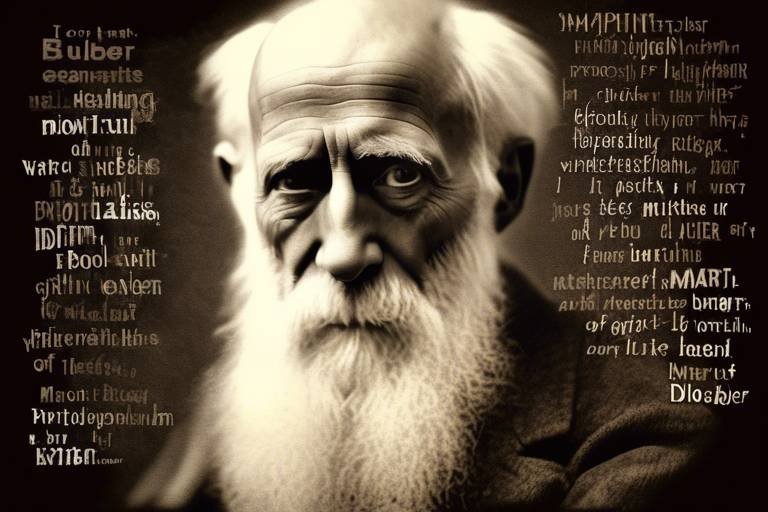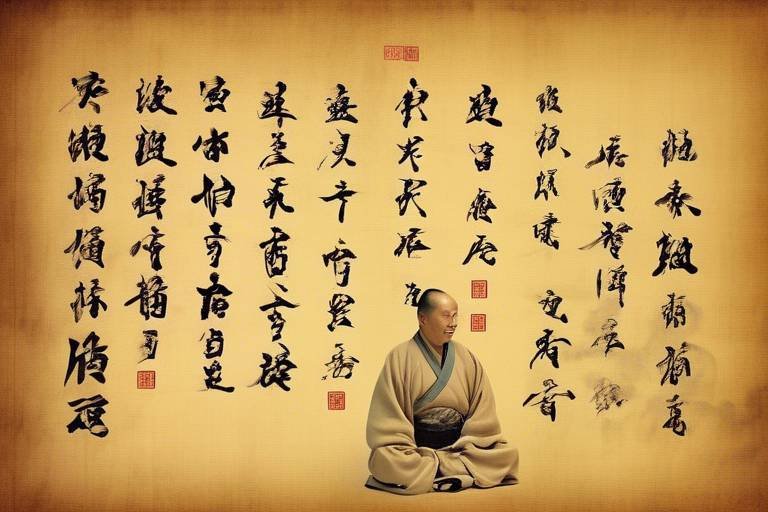Deleuze and Guattari - Rhizome and the Tree: A Comparison
In the realm of philosophy, few concepts have sparked as much debate and discussion as the contrasting ideas of the rhizome and the tree, as articulated by the influential thinkers Gilles Deleuze and Félix Guattari. These two metaphors serve as powerful lenses through which we can examine the complexities of knowledge, social organization, and artistic expression. The rhizome, with its non-linear, decentralized nature, stands in stark contrast to the tree, which embodies hierarchical and linear structures. But what does this mean for our understanding of the world? This article will delve into these concepts, exploring their implications across various domains, including philosophy, art, and social theory.
The rhizome is a fascinating concept that represents a non-hierarchical, interconnected network of ideas and entities. Imagine a sprawling underground system of roots that spreads in all directions, connecting various plants and organisms without a defined center. This imagery perfectly encapsulates the essence of the rhizome, which challenges traditional structures that prioritize linearity and hierarchy. In contemporary thought, the rhizome encourages us to embrace complexity and fluidity, fostering a more dynamic understanding of knowledge and relationships. It symbolizes a world where connections are made organically, allowing for the emergence of new ideas and perspectives that might otherwise remain hidden in rigid frameworks.
In stark contrast to the rhizome, the tree metaphor symbolizes hierarchical, linear structures that reflect traditional forms of knowledge and organization. Picture a tree with a single trunk that branches out into various limbs and leaves; this structure imposes a clear order and classification, making it easy to categorize and understand information. However, this model often comes with its own set of limitations. The tree's rigid framework can stifle creativity and limit the potential for interdisciplinary connections. In various disciplines, from education to sociology, the tree model influences how we perceive knowledge and authority. It shapes our understanding of hierarchies and power dynamics, often leading to exclusionary practices that marginalize alternative viewpoints.
Hierarchical structures, akin to trees, impose order and classification in a way that can feel both comforting and constraining. These structures are prevalent in many aspects of society, from corporate organizations to educational institutions. They dictate how knowledge is disseminated, who holds power, and how relationships are formed. For example, in academic settings, knowledge is often categorized into disciplines, each with its own set of rules and hierarchies. This can create barriers for those who wish to explore interdisciplinary connections, ultimately limiting the scope of inquiry and innovation.
Branching knowledge systems illustrate how information is categorized and organized within these hierarchical frameworks. While there are advantages to this model, such as clarity and ease of navigation, it also presents significant limitations. For instance, consider how students are often required to choose a specific major, which can pigeonhole their interests and restrict their exposure to diverse fields. This can lead to a fragmented understanding of knowledge, where students may excel in one area but lack the ability to connect it with others. The rigidity of branching systems can stifle creativity and critical thinking, essential components in a rapidly changing world.
Critiquing the tree model reveals its rigidity and exclusivity. As we navigate an increasingly complex world, it becomes clear that traditional hierarchies can hinder progress and innovation. Alternative approaches, such as the rhizomatic model, challenge these established norms by promoting inclusivity and adaptability. By embracing a more fluid understanding of knowledge and relationships, we can foster environments that encourage collaboration and creativity, breaking down the barriers that have long defined academic and social structures.
On the other hand, non-hierarchical networks, like rhizomes, promote fluidity and adaptability. These networks are characterized by their interconnectedness and the absence of a central authority, allowing for a more organic flow of information and ideas. In fields such as technology, sociology, and ecology, the rhizomatic model has gained traction as a way to understand complex systems. For instance, social media platforms exemplify rhizomatic structures, where users can connect, share, and collaborate without a defined hierarchy. This openness fosters innovation and creativity, enabling new ideas to emerge from unexpected connections.
A comparative analysis of the rhizome and tree reveals their distinct philosophical implications. While the tree model emphasizes stability and order, the rhizome celebrates chaos and connectivity. This divergence has significant consequences for how we approach knowledge, relationships, and artistic expression. By synthesizing these core differences, we can gain valuable insights into their relevance in modern discourse, particularly in how we navigate the complexities of our world.
The implications of rhizomatic and tree structures extend to social theory, influencing how we understand relationships and power dynamics. The tree model often reinforces traditional power structures, while the rhizome encourages a more egalitarian approach to social organization. This shift has profound effects on social movements, as grassroots organizations increasingly adopt rhizomatic principles to challenge established hierarchies and advocate for change.
Artistic representations often reflect these concepts, with rhizomatic art challenging conventions and pushing boundaries. Artists who embrace the rhizomatic model often employ innovative practices and mediums that defy traditional categorizations. By doing so, they create spaces for dialogue and exploration, inviting audiences to engage with their work in new and unexpected ways. This artistic approach mirrors the interconnectedness of ideas and experiences, further blurring the lines between disciplines and encouraging a more holistic understanding of creativity.
- What is the main difference between the rhizome and the tree?
The rhizome represents a non-hierarchical, interconnected network, while the tree symbolizes hierarchical, linear structures. - How do these concepts apply to social movements?
Rhizomatic structures promote grassroots organizing and challenge traditional power dynamics, leading to more inclusive social movements. - Can you give an example of rhizomatic art?
Artists who use multimedia installations or collaborative projects often embody rhizomatic principles by breaking down traditional artistic boundaries.

Understanding the Rhizome
The concept of the rhizome, as articulated by Gilles Deleuze and Félix Guattari, offers a fascinating alternative to traditional hierarchical models of thought and organization. Imagine a vast underground network of roots, sprawling and connecting in unpredictable ways—this is the essence of a rhizomatic structure. Unlike the rigid, linear growth of a tree, which branches out in a clear, organized manner, the rhizome thrives on interconnectivity and multiplicity. It encourages a way of thinking that embraces complexity and chaos, challenging the conventional norms that often govern our understanding of knowledge and society.
At its core, the rhizome is characterized by its non-hierarchical nature. It does not follow a single path or a predetermined structure; instead, it allows for various entry points and connections. This fluidity is what makes rhizomatic thinking particularly relevant in our rapidly changing world. In a society where information is abundant and constantly evolving, the ability to adapt and connect disparate ideas becomes invaluable. Rhizomatic structures can be found in numerous fields, from technology to social movements, where the emphasis is placed on collaboration and shared knowledge rather than strict authority.
One of the most intriguing aspects of the rhizome is its ability to resist categorization. Just as a rhizome can grow in any direction, so too can ideas and concepts branch out and intertwine in unexpected ways. This characteristic fosters a sense of inclusivity, allowing for diverse perspectives to coexist without the need for a dominant narrative. For instance, consider how social media platforms operate: they create a rhizomatic network where users can engage, share, and influence one another without a centralized authority dictating the flow of information.
Moreover, the rhizome challenges the idea of fixed identities. In a world where labels often confine us, the rhizomatic model encourages fluid identities that can shift and change over time. This perspective is particularly empowering in social movements, where individuals can connect based on shared goals rather than rigid categories. The rhizome, therefore, not only offers a new way of understanding connections but also serves as a powerful metaphor for social change.
In summary, understanding the rhizome is about embracing a world that is complex, interconnected, and ever-evolving. It invites us to rethink our approach to knowledge, relationships, and societal structures. By adopting a rhizomatic perspective, we can foster environments that value collaboration, adaptability, and inclusivity, ultimately leading to richer and more meaningful interactions in both personal and collective contexts.

The Tree as a Metaphor
The tree metaphor is a powerful symbol that evokes images of stability, structure, and order. Think about it: when you picture a tree, you see a strong trunk, branches reaching out, and leaves fluttering in the wind. This visual representation mirrors how knowledge and society are often organized in a linear, hierarchical manner. In many cultures, the tree has been used to illustrate the organization of thought, with roots representing foundational ideas and branches symbolizing the various fields of knowledge that stem from those roots. This hierarchical structure is not just a poetic image; it profoundly influences how we perceive and categorize information in our daily lives.
In academia, for instance, the tree model is prevalent in how disciplines are structured. Each subject can be viewed as a branch, with sub-disciplines branching off into even smaller categories. This way of organizing knowledge can be beneficial, allowing for a clear and systematic approach to learning. However, it also raises questions about the limitations of such a rigid structure. Are we missing out on valuable connections between fields that don’t neatly fit into this tree-like hierarchy? The tree metaphor can sometimes obscure the fluidity of ideas and the interconnections that exist between different areas of knowledge.
Moreover, the tree metaphor extends beyond academia into societal frameworks. Hierarchical organizations, much like trees, impose order and classification that can be seen in corporate structures, government systems, and even familial relationships. Each level of the hierarchy is designed to maintain control and ensure that information flows in a specific direction—usually from the top down. While this can create a sense of stability, it often leads to power dynamics that can stifle creativity and innovation. In a world that is increasingly interconnected, the limitations of a tree structure become more apparent.
Hierarchical structures, akin to trees, are deeply embedded in our social fabric. They dictate how we interact, communicate, and even how we understand our place in the world. In a traditional workplace, for example, there is often a clear chain of command, with each level of management having specific roles and responsibilities. This can lead to efficiency and clarity, but it can also create barriers to communication and collaboration. Employees may feel disconnected from the decision-making process, much like leaves that flutter far from the trunk of the tree.
Additionally, these hierarchical structures can perpetuate inequalities. Those at the top often have more access to resources and information, while those at the bottom may feel marginalized and unheard. This dynamic raises critical questions: How can we foster a more inclusive environment that values contributions from all levels? Are there better ways to organize our knowledge and relationships that reflect the complexities of modern life?
Branching knowledge systems illustrate how information is categorized and organized, much like the branches of a tree. In educational contexts, this structure can help students navigate complex subjects. For instance, a biology curriculum might branch from general concepts into specialized fields like microbiology, ecology, and genetics. This organization can make it easier for learners to find their niche.
However, while branching systems have their advantages, they also come with limitations. They can create silos where knowledge is compartmentalized, leading to a lack of interdisciplinary collaboration. This rigidity can stifle innovation and the exchange of ideas that often leads to breakthroughs. In contrast, a more rhizomatic approach—where knowledge is interconnected and fluid—might provide a more dynamic and inclusive way of understanding the world.
Critiquing the tree model reveals its rigidity and exclusivity. It often fails to account for the complexities of human experience and knowledge. For example, consider how marginalized voices are frequently excluded from traditional narratives. The tree metaphor can perpetuate a singular perspective, overshadowing the rich tapestry of diverse experiences and ideas that exist in our society. By challenging the dominance of the tree model, we open the door to alternative approaches that embrace multiplicity and fluidity.
In conclusion, while the tree metaphor has its merits in creating order and structure, it is essential to recognize its limitations. As we navigate an increasingly complex world, embracing more inclusive and interconnected models of understanding—like the rhizome—can lead to richer insights and a more equitable society.
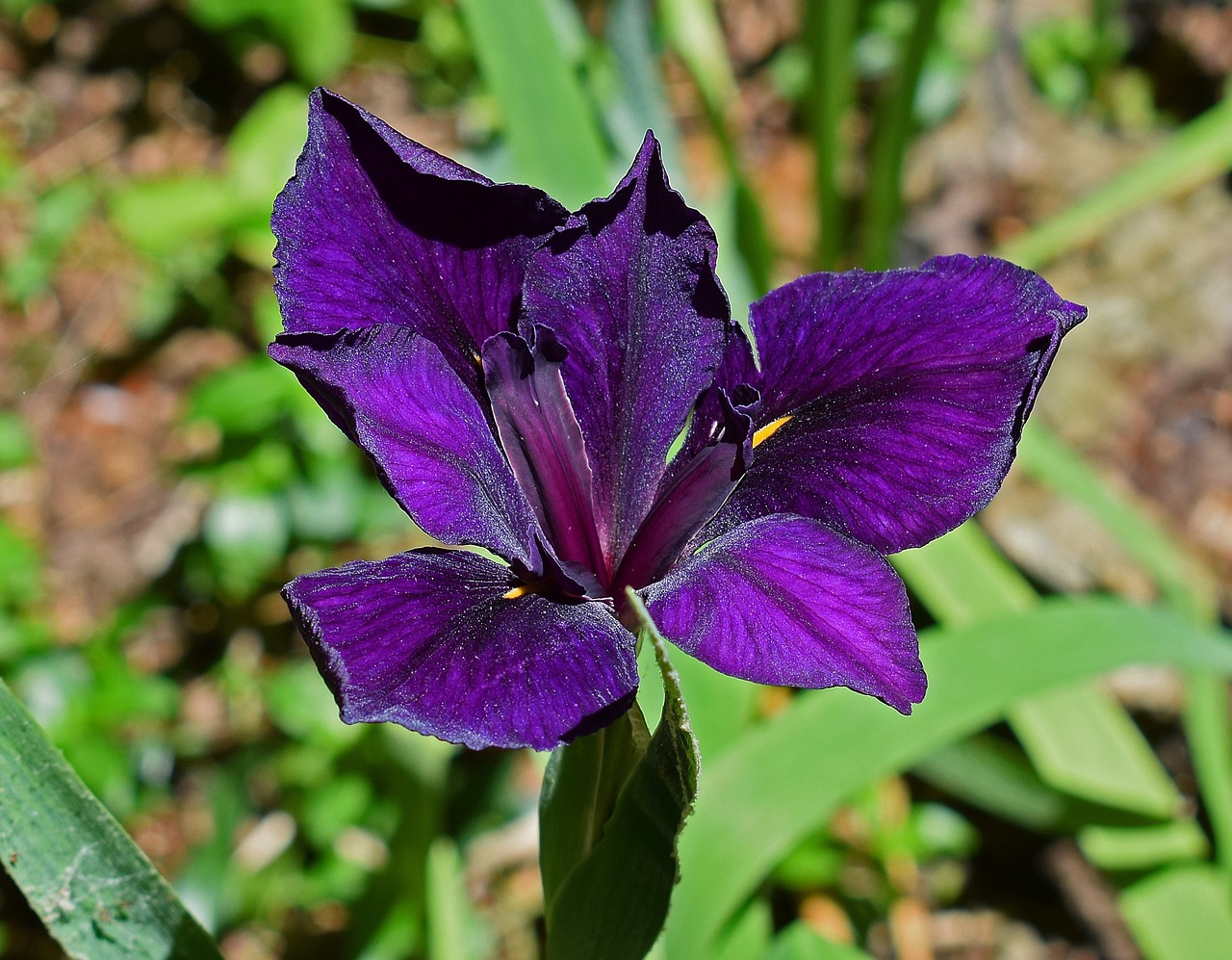
Hierarchical Structures
Hierarchical structures are deeply embedded in our society, much like the roots of a tree that reach deep into the soil, providing stability and organization. These structures impose a clear order, categorizing information and relationships in a linear fashion. Think about it: when you walk into a library, the books are arranged in a specific order, creating a hierarchy that guides you to the information you seek. This method of organization, while effective in some contexts, often leads to a rigid framework that can stifle creativity and limit the flow of ideas. In many ways, hierarchical structures can be likened to a well-manicured garden, where everything is neatly pruned and categorized, but at what cost?
In educational settings, for instance, the reliance on hierarchical models can shape how knowledge is disseminated. Students are often expected to absorb information in a top-down manner, where the teacher (or the 'tree trunk') imparts knowledge to students (the 'branches'). This method can create a disconnect between learners and the material, as it does not account for the diverse ways individuals engage with knowledge. As a result, we see a prevalence of rote memorization rather than critical thinking and exploration.
Moreover, hierarchical structures can reinforce power dynamics within society. Those at the top of the hierarchy often control the narrative, leaving little room for alternative voices. This can lead to a homogenization of thought, where only certain perspectives are valued and others are marginalized. For example, in corporate environments, the traditional pyramid structure can stifle innovation, as employees may feel discouraged from sharing ideas that diverge from the established norms.
To illustrate the impact of hierarchical structures, consider the following table:
| Aspect | Hierarchical Structure | Implications |
|---|---|---|
| Knowledge Dissemination | Top-down approach | Limited engagement and critical thinking |
| Power Dynamics | Centralized control | Marginalization of alternative voices |
| Innovation | Rigid frameworks | Discouragement of creative ideas |
In conclusion, while hierarchical structures can provide a sense of order and clarity, they also come with significant limitations. They can hinder the organic flow of knowledge and creativity, leading to a society that values conformity over innovation. As we explore alternatives, it becomes crucial to question the effectiveness of these structures and consider how we might cultivate a more inclusive and dynamic approach to knowledge and organization.
- What are hierarchical structures? Hierarchical structures are systems that organize people or information in a ranked order, often resembling a tree-like model.
- How do hierarchical structures affect education? They can limit critical thinking by promoting a top-down approach to knowledge dissemination.
- What are the downsides of hierarchical structures? They can marginalize alternative voices and discourage innovation by enforcing rigid frameworks.
- Are there alternatives to hierarchical structures? Yes, non-hierarchical networks, such as rhizomatic models, promote fluidity and adaptability in knowledge sharing.

Branching Knowledge Systems
Branching knowledge systems serve as a fascinating lens through which we can examine how information is structured and disseminated. Imagine a tree with its myriad branches, each representing a distinct field of knowledge, extending outward to form a complex canopy of understanding. This metaphor encapsulates the traditional approach to knowledge classification, where disciplines are neatly categorized, making it easy to navigate the vast landscape of information. However, while this model provides clarity and organization, it also has its drawbacks.
One of the primary advantages of branching knowledge systems is their ability to create a clear hierarchy. For instance, in academic settings, subjects are often divided into major fields and sub-disciplines, allowing students and researchers to specialize deeply. This structure can enhance learning by providing a roadmap for exploration. However, this very rigidity can also stifle creativity and interdisciplinary collaboration. When knowledge is confined to strict categories, opportunities for innovative connections may be lost, much like a bird trapped in a cage, unable to soar freely among the clouds.
Furthermore, branching systems can lead to the exclusion of marginalized voices and alternative perspectives. If knowledge is viewed through a linear lens, those who do not fit neatly into established categories may find themselves overlooked or dismissed. This raises critical questions: Are we truly capturing the full spectrum of human experience? Are we limiting our understanding by adhering too closely to these hierarchical structures? In essence, while branching knowledge systems have their merits, they can also perpetuate a narrow view of what constitutes valid knowledge.
To illustrate these points, consider the following table that contrasts the benefits and limitations of branching knowledge systems:
| Advantages | Limitations |
|---|---|
| Clear organization of information | Stifles creativity and interdisciplinary work |
| Facilitates deep specialization | Excludes marginalized voices and perspectives |
| Easy navigation through established fields | Perpetuates rigid classifications |
In light of these considerations, it becomes evident that while branching knowledge systems serve a purpose, they also warrant a critical examination. The challenge lies in balancing the need for structure with the desire for inclusivity and fluidity in knowledge representation. By acknowledging the limitations of traditional models, we can begin to explore alternative frameworks that embrace a more interconnected approach, ultimately enriching our understanding of the world around us.
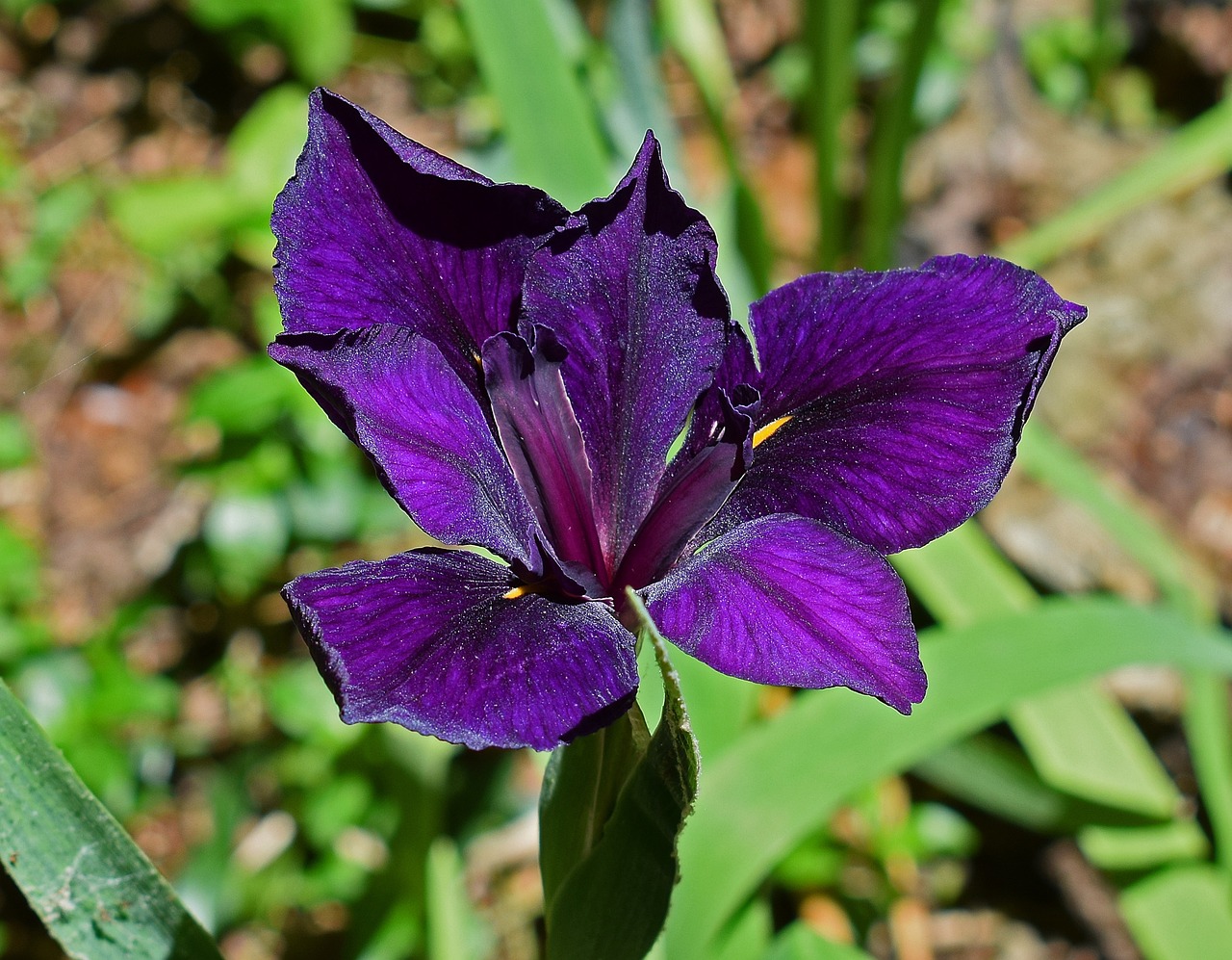
Critique of the Tree Model
The tree model, while offering a familiar structure for organizing knowledge and ideas, faces significant critique for its inherent rigidity and exclusivity. This metaphor, with its linear hierarchy, often fails to accommodate the complexities of our interconnected world. Just like a tree that can only grow in a specific direction, this model limits the potential for diverse perspectives and alternative narratives to flourish. In essence, it can be likened to trying to fit a square peg into a round hole—no matter how hard you push, it simply doesn’t work.
One of the primary criticisms of the tree model is its tendency to impose a strict order on knowledge that can stifle creativity and innovation. By categorizing information in a hierarchical fashion, it often prioritizes certain viewpoints while marginalizing others. This can lead to a narrow understanding of complex issues, as it encourages a linear progression of thought rather than a more holistic view. For instance, in educational contexts, students may be encouraged to follow a predetermined path of inquiry, which can limit their ability to explore alternative ideas or interdisciplinary approaches.
Moreover, the tree model can perpetuate power dynamics that favor established authorities over emerging voices. In many academic and professional settings, the dominance of certain branches of knowledge can create an environment where dissenting opinions are viewed as outliers or even threats. This not only stifles discussion but also reinforces existing hierarchies, making it difficult for new ideas to take root. For example, consider how traditional disciplines often operate in silos, creating barriers to collaboration and interdisciplinary research.
In response to these limitations, many scholars and practitioners advocate for alternative frameworks that embrace a more inclusive and dynamic approach to knowledge. These frameworks encourage dialogue and interaction among diverse perspectives, much like a rhizome that spreads out in multiple directions, allowing for a richer and more nuanced understanding of complex issues. By emphasizing connectivity and fluidity, these models challenge the status quo and open the door to innovative thinking and collaboration.
Ultimately, critiquing the tree model is not merely an academic exercise; it is a call to action. It invites us to reconsider how we organize knowledge, engage in discourse, and empower voices that have been historically marginalized. In doing so, we can cultivate a more equitable and vibrant intellectual landscape that reflects the complexities of our world. As we move forward, it is essential to recognize that knowledge is not a static entity but a living, evolving network—one that thrives on diversity, adaptability, and collaboration.
- What is the tree model in knowledge organization? The tree model is a hierarchical structure that organizes knowledge in a linear fashion, similar to the branches of a tree, where information is categorized and classified.
- Why is the tree model criticized? It is criticized for its rigidity, exclusivity, and tendency to marginalize diverse perspectives, which can stifle creativity and innovation.
- What alternatives exist to the tree model? Alternatives like the rhizome model promote non-hierarchical, interconnected networks that encourage diverse viewpoints and collaborative exploration of ideas.
- How can we implement a more inclusive knowledge framework? By fostering open dialogue, encouraging interdisciplinary collaboration, and actively seeking out marginalized voices, we can create a more inclusive intellectual environment.

Non-Hierarchical Networks
The concept of non-hierarchical networks, much like the rhizome itself, promotes a sense of **fluidity** and **adaptability** that stands in stark contrast to traditional hierarchical structures. Imagine a vast web, where each thread connects to another, creating a rich tapestry of relationships and interactions. This model allows for multiple entry points and pathways, making it a dynamic and inclusive approach to understanding the world around us. In a non-hierarchical network, every node has the potential to connect and influence others, fostering a sense of **collaboration** rather than competition.
One of the most fascinating aspects of non-hierarchical networks is their ability to adapt and thrive in the face of change. Just as a rhizome can grow in any direction, these networks can evolve based on the needs and contributions of their participants. This adaptability is particularly evident in fields such as **technology**, where platforms like social media allow users to create and share content without the constraints of traditional gatekeeping. Here, the users themselves become the curators, blurring the lines between creator and consumer.
Moreover, non-hierarchical networks are increasingly relevant in **sociology** and **ecology**. In sociology, grassroots movements often exemplify this model, as they emerge organically from the community rather than being imposed from above. These movements harness the power of collective action, demonstrating how individuals can come together to effect change without a central authority. Similarly, in ecology, ecosystems function as non-hierarchical networks where various species interact and depend on one another, creating a balanced environment that thrives on diversity.
To illustrate the differences between hierarchical and non-hierarchical models, consider the following table:
| Aspect | Hierarchical Networks | Non-Hierarchical Networks |
|---|---|---|
| Structure | Top-down | Flat |
| Decision Making | Centralized | Decentralized |
| Communication | One-way | Multi-directional |
| Adaptability | Rigid | Flexible |
As we delve deeper into the implications of non-hierarchical networks, it becomes clear that they not only offer a new way of organizing knowledge and relationships but also challenge the very foundations of power dynamics in society. By promoting inclusivity and collaboration, these networks can lead to more equitable systems, where everyone's voice is valued. The question arises, how can we further integrate these principles into our everyday lives? The answer lies in embracing the rhizomatic spirit—encouraging connections, fostering dialogue, and recognizing the inherent value of diverse perspectives.
In conclusion, non-hierarchical networks represent a paradigm shift in how we understand relationships and organization. They invite us to rethink the structures we inhabit and challenge us to create spaces where **everyone** can contribute and thrive. As we continue to explore these ideas, we must remain open to the possibilities that emerge from such interconnectedness and the profound impact it can have on our world.
- What is a non-hierarchical network? A non-hierarchical network is a structure where all participants have equal power and influence, promoting collaboration and adaptability.
- How do non-hierarchical networks function in society? They allow for grassroots movements and collective actions to emerge organically, without central authority, fostering inclusivity.
- What are some examples of non-hierarchical networks? Social media platforms, community organizations, and ecosystems in nature are all examples of non-hierarchical networks.

Comparative Analysis
The comparative analysis of the rhizome and tree structures reveals not only their fundamental differences but also the profound implications they hold for various fields of thought. At first glance, one might think of the rhizome as merely a more chaotic counterpart to the orderly tree. However, this superficial understanding fails to capture the depth of their philosophical significance. The rhizome, with its emphasis on non-hierarchical connections, stands in stark contrast to the tree's rigid, linear hierarchy.
In philosophy, the rhizome embodies a dynamic and decentralized approach to knowledge, suggesting that ideas can proliferate in unexpected directions without a prescribed path. This is akin to a network of highways where every intersection offers a new route, rather than a single, predetermined road leading to a destination. On the other hand, the tree model represents a more traditional approach, where knowledge branches out from a central trunk, leading to a clear hierarchy of information. This structure may offer clarity and organization, but it often comes at the cost of excluding alternative perspectives and voices.
To illustrate these differences, consider the following table that outlines key characteristics of both models:
| Aspect | Rhizome | Tree |
|---|---|---|
| Structure | Non-hierarchical, interconnected | Hierarchical, linear |
| Growth | Multiple directions, unpredictable | Single direction, predictable |
| Knowledge Representation | Fluid, adaptable | Static, rigid |
| Inclusivity | Embraces diversity | Often excludes alternative views |
When we delve into social theory, the implications of these models become even more pronounced. The rhizomatic structure encourages a sense of community and collaboration, where power is distributed among various nodes rather than concentrated at the top. This can be seen in modern social movements that thrive on decentralized communication platforms, allowing for a multitude of voices to be heard. In contrast, tree-like organizations often mirror traditional power dynamics, where a select few hold authority and dictate the flow of information.
Moreover, the artistic representations of these concepts further enrich our understanding. Artists who embrace the rhizomatic model often create works that challenge conventional boundaries, inviting viewers to engage in a dialogue rather than passively consume information. This can be seen in contemporary art installations that encourage interaction and participation, breaking away from the solitary experience often associated with traditional art forms. Conversely, tree-like artistic expressions may rely on established techniques and hierarchies, reinforcing existing norms rather than questioning them.
In summary, the comparative analysis of the rhizome and tree structures reveals their distinct philosophical implications, influencing how we perceive knowledge, power, and creativity. The rhizome promotes an inclusive, adaptable approach, while the tree often enforces a rigid, hierarchical order. Understanding these differences is crucial in navigating the complexities of contemporary thought and societal structures.
- What is the main difference between the rhizome and tree concepts?
The main difference lies in their structure: the rhizome is non-hierarchical and interconnected, while the tree is hierarchical and linear.
- How do these concepts apply to social movements?
Rhizomatic structures encourage decentralized participation and collaboration, whereas tree structures often reflect traditional power dynamics.
- Can these models coexist in contemporary thought?
Yes, both models can coexist; however, understanding their implications helps in choosing the appropriate approach for different contexts.

Implications for Social Theory
The implications of rhizomatic and tree structures extend far beyond the realms of philosophy and art; they significantly influence our understanding of social theory. At the heart of this discussion lies the way these two models shape our perceptions of relationships and power dynamics within society. Think about it: in a world dominated by hierarchical structures, like trees, we often see a clear chain of command. This linear approach can create a sense of order, but it also imposes limitations on how we interact and connect with one another.
In contrast, the rhizome model promotes a more fluid and decentralized understanding of social interactions. Imagine a vast network of roots spreading underground, intertwining and connecting in unexpected ways. This metaphor captures the essence of how relationships can form outside of traditional hierarchies. In social movements, for example, we see that grassroots organizing often embodies a rhizomatic structure. Leaders emerge not from a top-down hierarchy but from the collective efforts of individuals united by a common goal. This decentralization fosters inclusivity and encourages diverse voices to be heard.
Furthermore, the implications of these models can be observed in the way we approach social issues. For instance, consider the difference in how we might tackle a problem like climate change. A tree-like approach might involve a few key organizations at the top making decisions for everyone, while a rhizomatic approach would see multiple stakeholders—communities, activists, scientists—collaborating in a more interconnected manner. This allows for a broader range of solutions and perspectives, ultimately leading to more effective action.
To illustrate these differences further, let's look at a comparative analysis of how rhizomatic and tree structures manifest in social theory:
| Aspect | Tree Structure | Rhizomatic Structure |
|---|---|---|
| Organization | Hierarchical, centralized | Decentralized, interconnected |
| Decision-Making | Top-down | Collaborative |
| Inclusivity | Exclusive, limited | Inclusive, diverse |
| Adaptability | Rigid | Fluid |
This table clearly illustrates how the choice between these two models can influence everything from organizational structure to how we engage with social issues. The rhizomatic model invites us to embrace complexity and interdependence, challenging us to rethink our roles within society. It encourages us to ask questions like: How can we work together more effectively? What new connections can we forge to address pressing social challenges?
In summary, the implications of rhizomatic and tree structures in social theory are profound. They not only shape our understanding of power dynamics but also influence how we can mobilize and organize for change. By embracing a rhizomatic perspective, we open ourselves up to a world of possibilities, fostering a more inclusive and adaptive approach to social issues. As we continue to navigate the complexities of modern society, it's essential to recognize the value of interconnectedness and the potential for new forms of collaboration.
- What is the main difference between rhizomatic and tree structures?
Rhizomatic structures are decentralized and interconnected, promoting inclusivity and collaboration, while tree structures are hierarchical and centralized, often limiting participation. - How do these concepts apply to social movements?
Social movements often benefit from a rhizomatic approach, allowing for diverse voices and grassroots organizing, as opposed to a top-down hierarchy. - Can these concepts influence how we address social issues?
Yes, adopting a rhizomatic perspective can lead to more effective solutions by fostering collaboration among various stakeholders.
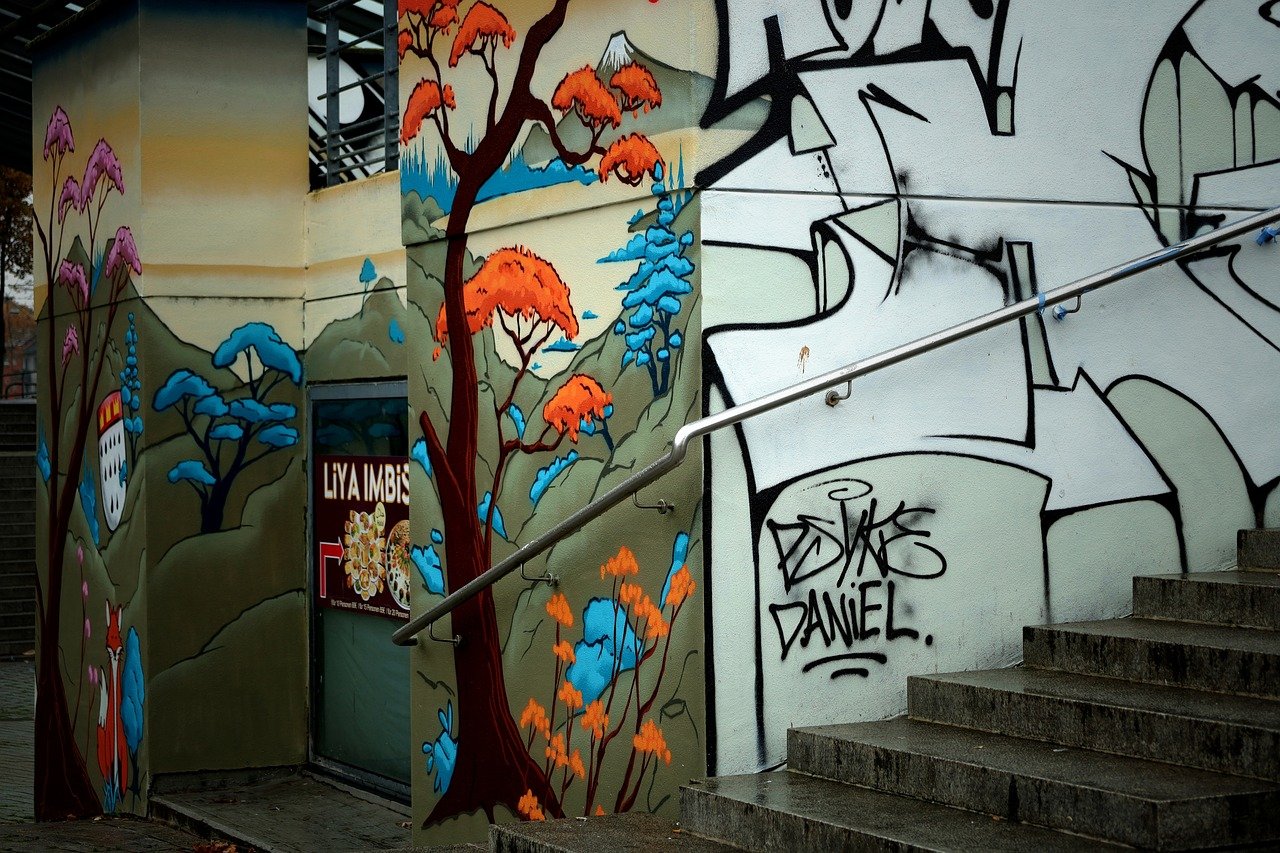
Artistic Representations
Art has always been a mirror reflecting the complexities of human thought and society. When we delve into the concepts of the rhizome and the tree, we uncover a fascinating landscape of artistic representations that challenge conventional norms. Artists, much like philosophers, are explorers of ideas, and they often use their mediums to express the fluidity and interconnectedness of the rhizomatic model. This approach breaks away from the rigid structures of traditional art forms, allowing for a more dynamic and inclusive expression.
For instance, consider the works of contemporary artists who embrace collaboration and participation in their practices. These artists often create installations or performances that invite audience interaction, blurring the lines between creator and spectator. This participatory nature is akin to a rhizome, where every participant can contribute to the growth and evolution of the artwork. In contrast, traditional art forms, often represented by the tree metaphor, typically involve a singular vision where the artist stands as the sole authority, dictating the experience. The shift towards a rhizomatic approach in art reflects a broader cultural movement towards inclusivity and shared knowledge.
Moreover, the use of technology in art further amplifies this rhizomatic quality. Digital art, for example, thrives on networks and connections, enabling artists to reach global audiences without the constraints of physical space. Platforms like social media allow for the rapid dissemination of ideas, creating a vibrant ecosystem where artistic expressions can morph and evolve in real-time. This is a stark contrast to the linear progression of traditional art forms, where the 'tree' model often dictates a clear lineage and hierarchy of influence.
To illustrate this further, let's take a look at some notable examples of artistic representations that embody these concepts:
| Artist | Work | Concept |
|---|---|---|
| Olafur Eliasson | The Weather Project | Audience interaction and shared experience |
| Rirkrit Tiravanija | Untitled (Free) | Creating community through shared meals |
| Yoko Ono | Wish Tree | Public participation in art-making |
These artists exemplify how the rhizomatic model can manifest in various forms, emphasizing the importance of community and interaction. Their works not only challenge traditional artistic hierarchies but also invite viewers to become part of the creative process. This shift towards a more interconnected artistic practice resonates with the broader societal changes we are witnessing today, where collaboration and collective knowledge are increasingly valued.
In conclusion, the artistic representations of the rhizome and the tree metaphor highlight a significant evolution in how art is created and experienced. By embracing the principles of non-hierarchy and interconnectedness, artists are not just creating works; they are fostering communities and dialogues that reflect the complexities of our world. As we continue to explore these concepts, we can anticipate even more innovative and transformative artistic practices that challenge our understanding of art and its role in society.
- What is the rhizome concept in art? The rhizome concept in art refers to a non-hierarchical, interconnected approach that encourages collaboration and audience participation.
- How does the tree metaphor apply to traditional art? The tree metaphor symbolizes hierarchical structures where artistic authority is centralized, often limiting audience engagement and participation.
- Can you give examples of artists who embody these concepts? Yes, artists like Olafur Eliasson, Rirkrit Tiravanija, and Yoko Ono create works that emphasize community engagement and shared experiences.
- Why is the rhizomatic approach important in contemporary art? The rhizomatic approach is important because it reflects modern values of inclusivity, collaboration, and the fluid exchange of ideas, making art more accessible and relevant to diverse audiences.
Frequently Asked Questions
- What is the main difference between the rhizome and the tree concepts?
The rhizome represents a non-hierarchical, interconnected network, while the tree symbolizes a hierarchical, linear structure. Essentially, think of a rhizome as a sprawling web of ideas that can grow in any direction, whereas the tree has a clear trunk and branches that dictate its growth.
- How do these concepts apply to contemporary thought?
In contemporary thought, the rhizome encourages fluidity and adaptability, challenging rigid structures. This is particularly relevant in fields like technology and sociology, where interconnectedness and collaboration are key. The tree model, on the other hand, often reflects traditional forms of organization, which can hinder innovation and inclusivity.
- Can you give examples of rhizomatic structures in society?
Sure! Social media platforms are a prime example of rhizomatic structures. They allow for decentralized communication and interaction, enabling users to connect in diverse and non-linear ways. This contrasts with traditional media, which typically follows a hierarchical model of information dissemination.
- What are the limitations of the tree model?
The tree model can be quite rigid and exclusive, often leading to oversimplification of complex ideas. It tends to categorize knowledge in a way that can marginalize alternative perspectives, making it difficult for new ideas to emerge and flourish.
- How do artists incorporate these concepts in their work?
Artists often embody rhizomatic ideas by creating works that defy traditional boundaries and classifications. For instance, installation art that invites viewer interaction can be seen as a rhizomatic practice, encouraging multiple interpretations and experiences rather than a single, linear narrative.
- What implications do these concepts have for social movements?
Rhizomatic structures can empower social movements by fostering decentralized organization and collaboration. This allows for a more democratic approach to activism, where various voices and perspectives can be heard, contrasting with hierarchical movements that may stifle dissent and limit participation.
- How can educators apply the rhizome concept in teaching?
Educators can apply the rhizome concept by promoting collaborative learning environments that encourage exploration and connectivity among students. Instead of following a strict curriculum, they can create pathways for students to pursue their interests, fostering creativity and critical thinking.



